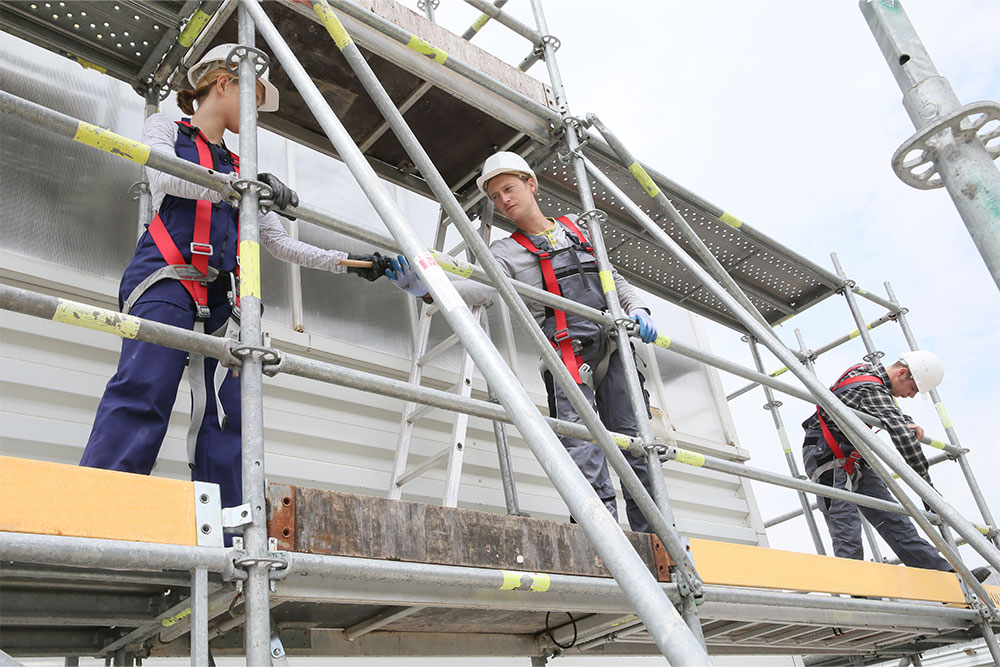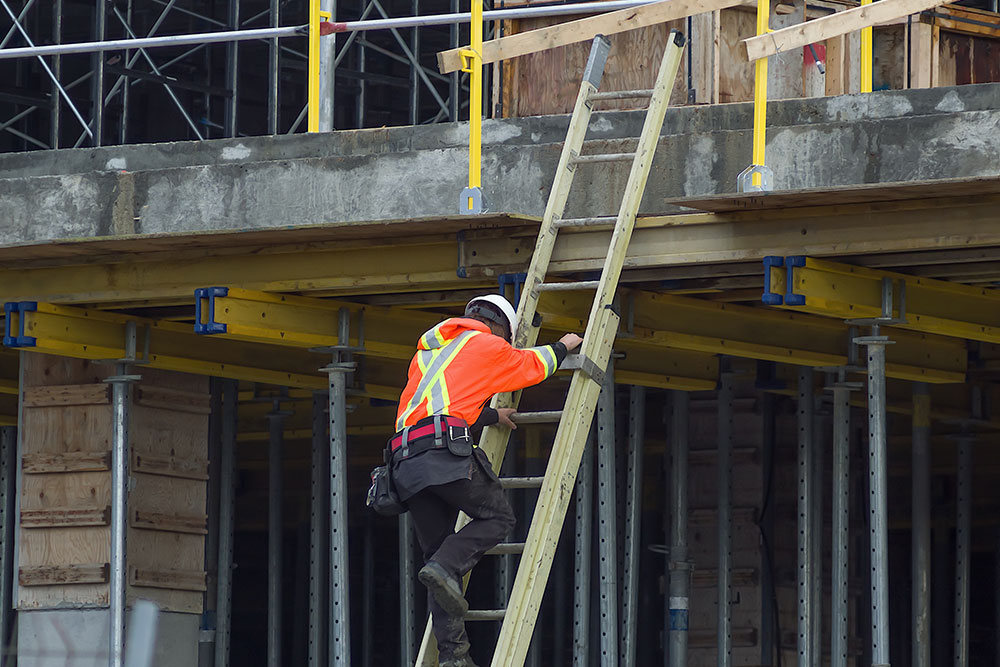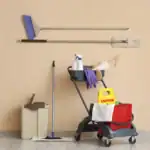
What type of accident kills most construction workers? The answer has been consistent for years: falls from height.
Falls from height account for around half of all deaths in the construction sector – that’s more than the next four most dangerous accident types combined.
Our guide explores the top five fatal types of accidents afflicting construction sites and what can be done to prevent them. It also covers common non-fatal injuries, so you know where workers are most at risk.
How Many Construction Workers Are Killed Each Year?
According to the Health and Safety Executive (HSE), 135 workers were killed in job-related accidents across all industries in 2022/23.
The majority of these fatalities were in construction, where 45 workers lost their lives. This figure makes construction officially the most lethal industry. Construction deaths doubled those in the agriculture, forestry and fishing sector, which came in second with 21 fatalities. Manufacturing rounded out the top three with 15 fatalities.
The construction industry makes up 6% of the workforce in Great Britain, yet it accounts for almost 40% of occupational fatalities. So why is construction overrepresented in fatal accident statistics? There are a few reasons.
Why is Construction More Dangerous than Other Industries?
Construction work is often hazardous. Contractors are expected to regularly work at heights, operate dangerous equipment and work around heavy plant and machinery. There are also the obvious physical demands of the job.
Moreover, the typical construction site is always changing. Hazards are rarely fixed, so they’re harder to plan for. Weather conditions also play a part, with heavy rain, wind, snow and sun all increasing risks in some way.
Projects also need a steady rotation of contractors and subcontractors, making it difficult to coordinate safety. New or temporary workers arriving on-site might be unaware of certain hazards or what other workers are doing. This lack of awareness makes it extremely difficult to implement adequate safety measures.
Because of the inherent risk, construction work is tightly regulated. Employers must thoroughly assess risks and develop strategies to manage them. They must then effectively communicate this plan to all workers and ensure compliance. Understanding which accidents and injuries are most common can help with this process.
Accident Investigation Training
Our accident investigation training guides users through a step-by-step process for investigating workplace accidents. It helps trainees gather facts, identify root causes, interpret findings and implement measures to prevent future incidents.
What Type of Accident Kills Most Construction Workers?
Falls from height are the most common fatal accidents in construction, accounting for 51% of industry fatalities in 2022/23. This data comes from the HSE report Construction Statistics in Great Britain, which lists the top five deadliest accident types. These are:
- Falls from height – 51% of fatalities
- Trapped by something collapsing/overturning – 12% of fatalities
- Struck by a moving/falling object – 10% of fatalities
- Struck by a moving vehicle – 10% of fatalities
- Contact with electricity – 6% of fatalities
While most falls are survivable, these figures prove that when these incidents happen, the consequences are severe. This is particularly true in construction, where workers consistently work at taller heights or on unstable surfaces.

What Type of Non-Fatal Accident is Most Common in Construction?
Falls from height are also a leading non-fatal accident type in construction. This fact sets the industry apart from others, where falls are typically lower in the rankings.
According to the HSE, the four most common kinds of non-fatal construction accidents are:
- Slips, trips or falls on the same level – 26% of non-fatal accidents
- Falls from height – 20% of non-fatal accidents
- Injured while handling, lifting or carrying – 17%
- Struck by a moving/falling object – 12%
Compare these rankings with averages across all industries:
- Slips, trips or falls on the same level – 32% of non-fatal accidents
- Injured while handling, lifting or carrying – 17% of non-fatal accidents
- Struck by a moving object – 11% of non-fatal accidents
- Falls from height – 8 % of non-fatal accidents
Interestingly, a similar percentage of workers suffer injuries caused by manual handling or slips and trips across all sectors. However, falls from height are a much bigger concern for construction workers. This difference could be explained by the widespread use of ladders, scaffolding and other elevated work platforms in construction.

How Do You Prevent Accidents?
There’s no silver bullet for preventing accidents. The priority is following the relevant health and safety regulations and ensuring that your workers are competent and following your set procedures.
For construction work, there are three key pieces of legislation you must comply with.
Health and Safety at Work etc. Act 1974
The Health and Safety at Work etc. Act 1974 (HSWA) is the cornerstone of British health and safety law. It applies to all workplaces, including construction sites.
The HSWA sets an overall duty of care for employers to protect the health, safety and welfare of their employees and others affected by their work activities. It doesn’t set out how to achieve this aim, however. To fulfil your duty of care under the HSWA, you need to comply with the regulations passed in support of it. These regulations set out your responsibilities, with risk assessment being one of the most important.
Risk Assessment
You need to complete a general risk assessment for your construction work, as required by the Management of Health and Safety Regulations 1999.
Depending on the project, you may also need to complete additional specific risk assessments. These are needed for certain types of work that are risky enough to have their own regulations. Examples include work with hazardous substances, manual handling and, of course, work at height.
Construction Design and Management Regulations
The Construction (Design and Management) Regulations 2015 (CDM) are specific to construction projects.
There are multiple duty holders under CDM, each with different health and safety responsibilities. But fundamentally, CDM sets out how to prevent accidents. The HSE summarises the key elements of CDM compliance as:
- Applying the general principles of accident prevention.
- Appointing the right people/organisations at the right time.
- Providing the necessary instruction, training and supervision so people can do their jobs safely.
- Ensuring communication and coordination between all duty holders and contractors.
- Consulting workers and cooperating with them on health and safety issues.
Work at Height Regulations
As mentioned, some risky types of work have dedicated regulations to comply with. Working at height is one of these high-risk activities, which is unsurprising considering what type of accident kills most construction workers.
The Work at Height Regulations 2005 set out how to prevent fatal falls from height. Under these regulations, the employer (or person in control of the work) must first act to avoid work at height if reasonable.
If work at height is essential, it must be planned (i.e., a ‘specific risk assessment’ must be carried out) and supervised by competent people who understand and can manage the risks. Workers must also be competent, appropriately trained and given the correct equipment.
Accident Investigation
Although it happens after an incident or close call, accident investigation is another critical tool for preventing further injuries on-site.
By investigating all incidents, including near-misses, you can uncover underlying issues in safety, training and environmental conditions that are increasing injury risks. The ultimate goal is to learn from these incidents and implement changes that will prevent similar events in the future.
Because falls from height are the leading cause of both fatal and non-fatal accidents in construction, it’s essential to investigate all incidents.
If a worker falls, even if they’re uninjured, the event should be seen as a warning. And, more importantly, it’s also an opportunity to find and fix unsafe conditions before they result in more serious harm.
Accident Investigation Training
Falls from height are the leading cause of fatal injuries in construction, accounting for over half of industry fatalities. They’re also a major cause of non-fatal injuries.
Even when no one is seriously hurt, investigating a fall can reveal unsafe conditions that might otherwise go unnoticed. Addressing these issues promptly can prevent future, potentially fatal, falls.
Our online Accident Investigation Training course equips you with the skills and knowledge to investigate adverse events effectively and prevent future accidents. It’s designed for anyone responsible for conducting workplace accident investigations. You’ll learn effective investigation techniques and how to apply root cause analysis to identify underlying issues.




















